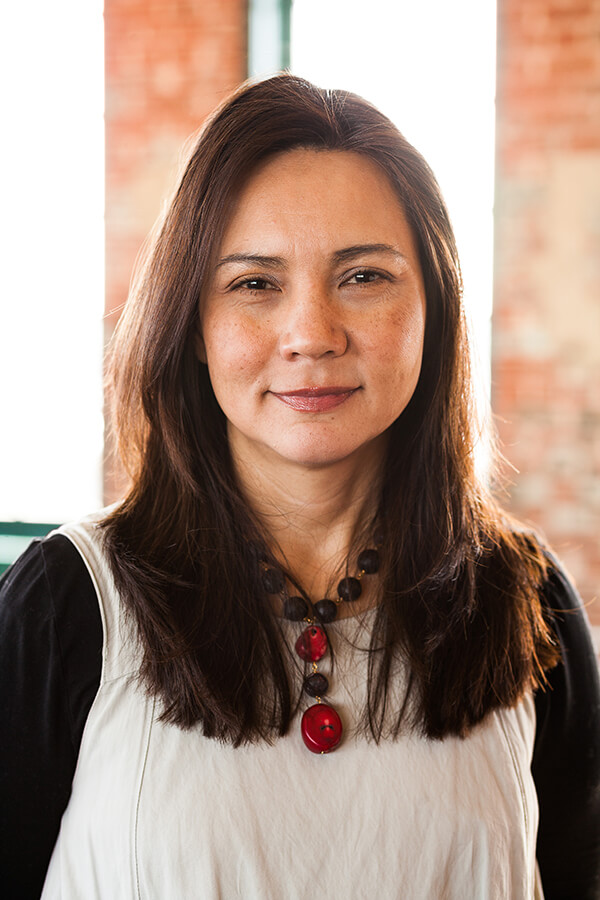Elizabeth Burdock didn’t get her start in wind energy, but if her resume is any indication of her grit and determination, she is just what the industry needs. Burdock is currently the Executive Director for the Business Network for Offshore Wind, a not-for-profit organization she helped develop to support and build the offshore wind industry in the United States.

Elizabeth Burdock, Executive Director of the Business Network for Offshore Wind.
“Our goal is to inform, educate, and connect businesses, developers, and global experts in offshore wind. We want to develop a community for networking and collaboration,” she said. “And, really, my goal is to facilitate and build the entire U.S. offshore wind supply chain.”
Burdock has been facilitating clean energy initiatives and working in the field of sustainability for more than 18 years. However, her journey to the wind industry began elsewhere, in housing development — and politics. As Senior Advisor at the U.S. Department of Housing and Urban Development during the Clinton Administration, she acted as liaison to the President’s Council on Sustainability, and as Executive Director of the White House Partnership for Advancing Technology in Housing.
“I started my career working on affordable housing issues and, soon after I got to HUD, President Clinton wanted to address climate change,” said Burdock. This was in the late 90s when the Kyoto Accord was an important topic, an international treaty where industrialized nations agreed to cut greenhouse gas emissions to a certain percentage below 1990 levels. “At the time, buildings accounted for about one-third of climate emissions and another one-third of those emissions come from housing,” she said.
So Burdock began work on Partnership for Advancing Technology & Housing, a HUD initiative to make housing more energy efficient and environmentally friendly without costing more than conventional homes. “It really opened up my eyes,” she said. “I mean home ownership was at its highest rates because people could put very little down for a place but, once they moved in, many couldn’t afford the utility bills. Energy rates were off the charts.”
As an advocate for sustainable, affordable living for every citizen, regardless of socio-economic status, this hit Burdock hard. “I couldn’t imagine anything more disheartening than finally affording a home for your family, and then not being able to stay there because you simply can’t afford the heat or electricity,” she said. So Burdock got to work, researching alternatives with the program’s mandates in mind: the technology must have less than 3% market share, and it must be 50% more energy efficient and 50% more environmentally friendly that conventional measures.
“The federal level gave me a good overview of clean energy because we looked at solar power, geothermal energy, and even smaller measures such as pre-fabricated drywall corners because they save costs on waste,” she said. “I learned that when we take energy efficiency and couple it with renewable energy, we can actually get to zero-energy homes.” This is when Burdock first became hooked on renewables.
After she left the Administration, she worked for several lobbyists and soon established a D.C. Chapter of the Renewable Energy Business Network, which provided a platform for researchers and business professionals with an interest in renewables to connect, promote, and grow the industry. “Here, my passion for renewables and wind energy in particular grew, and it quickly became my life’s purpose,” she said.
“A reason I am such a strong advocate for offshore wind is because of the jobs it creates. It is probably about three times that of what’s offered by other renewable sectors, such as solar or even onshore wind.” Topics still close to Burdock’s heart are fair opportunities and affordable living standards, and the wind industry can offer potential prospects both.
“It is so important to me that we give everyone a chance, and offshore wind does just that — it employs lower skilled people to highly educated PhDs. The benefit is that we are truly creating a ‘green’ economy where everyone can work and live successfully and efficiently.”
Now that America’s first offshore wind farm, the 30-MW Block Island project off the coast of Rhode Island, is up and running and states such as New York and Massachusetts have committed to offshore wind (New York plans to develop up to 2.4 GW of offshore wind by 2030 while Massachusetts requires large utilities to buy up to 1,600 MW of offshore wind energy), Burdock believes the industry is finally set to grow and expand on both coasts.
“The market is getting established, and I say that with pride,” she says. “We began as a state-focused organization in Maryland in 2014, and are now a national organization recognized on an international level.” The Network, and Burdock in particular, spent a lot of time researching and learning from the offshore industry in the UK and Europe, with hope of accelerating development and saving costs in the U.S.
“We’re about 20 years behind Europe, but the good news is that we can take from their experiences and learn from their challenges to move the industry forward much more quickly here,” she said. One way the Network is doing this is through an annual conference, the International Offshore Wind Partnering Forum, which Burdock spearheaded. It brings global experts to discuss and collaborate on the latest technologies and developments in offshore wind. Now in its fourth year, it will take place in Maryland this April.
“As the only organization in the whole country focused solely on offshore wind, we have become the primary voice for the offshore industry in the U.S., and it means so much to me,” said Burdock. “We’ve worked hard, gained credibility incredibly quickly, and I cannot wait to see what the industry — in the U.S. and North America as a whole — will look like in the next five years.”
Filed Under: News, Offshore wind, Policy




